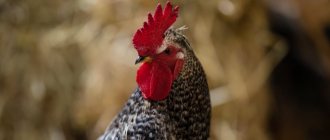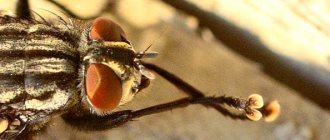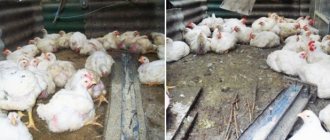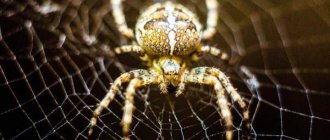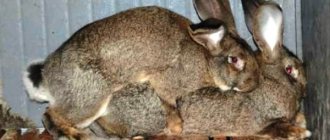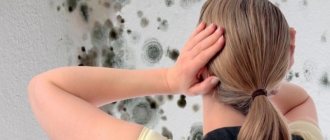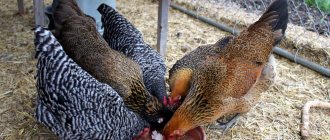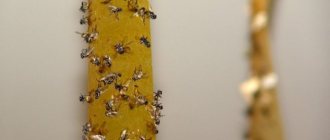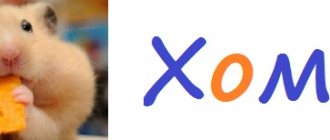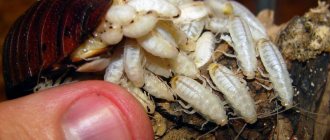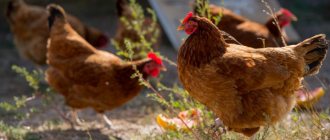Factors affecting feather plucking by ducks
It is difficult to answer unequivocally the question of why ducks pluck each other’s feathers, because the desire to damage the feather cover can awaken in them for a number of reasons. A waterfowl, the mulard, is often famous for this activity. If this does not apply to your farm, then perhaps it’s time to pay attention to other details.
- Analyze the birds' diet. It happens that ducks need an additional supply of vitamins. With a lack of proteins, minerals and other vital components, ducklings and adult birds begin to replenish them in an unusual way for us and pinch their “comrades”.
- The second point also concerns nutrition, but in the opposite sense. Reconsider your approach to feeding, because the ducks may be overfed. By adding bran, high-calorie vegetables and fruits to the feed, you help flush out important microelements from the birds’ bodies. This happens due to the strong laxative effect of the listed products.
- There is no need to suddenly change the birds' diet. Ducks pluck the feathers of themselves and their relatives when they are in a stressful state, which happens after significant changes. The missing components should be introduced gradually, without frightening the pets.
- Reconsider the “place of residence” of birds. Perhaps you have limited them in the necessary care or space. Ducklings should not be cramped or in an overly wet or dry environment. Prepare the necessary feeders, drinkers and other supplies for them.
- Take a closer look at all the individuals. It is possible that some bird is setting a bad example for others. In this case, you need to think about limiting his communication with other birds. Cloned ducks are often ardent aggressors and react more than others to the appearance of blood.
Ducks' wings become deformed from human food
01.03.2013
A popular practice in city parks could have a devastating effect on bird populations that live in urban environments, says a Sacramento, California-based animal activist. Feeding birds bread crumbs or other human food scraps, especially to flocks of geese and ducks, can actually cause them to develop severe wing deformities. This fact was recently confirmed in a study conducted by the municipal government of Sacramento.
Judi McCleier, a local bird watcher, first began noticing a year ago that many of the birds living in McKinley Park on the city's east side were beginning to develop unusual wing deformities. The wings protruded outward and upward, instead of resting neatly on the body. After investigating the situation, McCluer came to a shocking conclusion:
“I did some research and found that it is caused by us, from the human food we give them,” the enthusiast explained to reporters. - “Human food is not digested properly by the digestive system of birds.”
McCluer initially tried to prevent park visitors from feeding the birds loaves of bread and other foods, which had partial success. But she eventually took the problem to city officials, who came to the same conclusion—human food is toxic to birds and causes developmental defects.
The city soon posted signs in the park warning visitors about the toxicity of human food to birds, and many visitors listened. But in the end, they stopped feeding the birds altogether, which city officials see as a harmful consequence. So the municipality unilaterally removed all the signs and encouraged McCluer to place her homemade signs throughout the park. She was also provided with appropriate free bird food, which had a positive effect, Naturalnews reported.
“Feeding ducks with bread, seeds, crackers, chips, popcorn
is equivalent to feeding your child only candy,” experts explain. “Ducks like bread and other foods and demand more, just like children want candy. However, human food has no nutritional value for waterbirds. It fills their stomachs so much that there is no room for the kind of food that would allow them to stay healthy.”
Yaroslav Plutenko
You can't sit back
At the slightest suspicion of signs of feather plucking, you cannot hesitate: measures must be taken as quickly as possible in order to prevent serious consequences. When the feather cover is removed, the bird not only experiences discomfort, but also receives a huge blow to its health.
Firstly, by pecking feathers, ducks injure the skin, forming minor wounds or serious lacunae on the integument. When blood is released, pecking of the wound continues, which entails serious blood loss and possible infection. In the second case, the situation is considered extremely dangerous, because it can provoke the death of the bird.
Secondly, when ducks pluck feathers at a young age, they seriously traumatize the psyche, becoming aggressive and angry. Be attentive to the ducklings when transferring them to free-range housing, because it is during this period that they may show aggression and pull out newly appeared feathers. If everything is already clear with the question of why ducks pinch each other until they bleed, then we still have to find the answer to the question of what to do in this situation.
Selection rules
You can get a brood of musk duck chicks at any time of the year if you place the collected eggs in an incubator. On average, each egg should weigh at least 70, but it is better to choose specimens weighing 80-90 grams.
Selection of Muscovy duck eggs
Only those specimens that meet the following requirements are sent for incubation:
- size: medium;
- shell color: white, possibly with a yellowish tint;
- shape: oval, regular;
- shell: no cracks, defects, chips or growths.
Experts do not recommend placing contaminated eggs in an incubator. But they can be cleaned of droppings. This is done immediately before the start of the bookmarking process: soiled specimens can also be stored.
There is no need to wash with soapy water or intensively clean the shell. To clean and disinfect, you can purchase a special disinfectant or make a weak solution of manganese. All raw materials are placed in a container with liquid, heavily soiled specimens are wiped with a soft sponge or rag. Experienced poultry farmers say that there is no need to wipe them dry; you can wait until they dry themselves.
Mass ovoscopy
Particular attention is paid to ovoscopy. Transillumination allows for final screening
How to make an ovoscope with your own hands
Remove those specimens for which the following problems were identified during ovoscopy:
- spotted shells are a sign of calcium deficiency;
- excessively large air chamber;
- presence of foreign inclusions (grains of sand, feathers);
- visualization of blood clots;
- the presence of black spots: they occur when affected by mold;
- immobility of the yolk, its position shifted to one of the edges;
- lack of pronounced yolk: it can mix with the protein;
- light stripes that appear due to mechanical damage;
- two yolks;
- free movement of the yolk under the shell.
Identifying problematic instances
Only those eggs are subject to incubation if, upon candling, it has been established that:
- the air chamber is at the blunt end;
- the yolk is located in the center, with sharp turns its moderate mobility is observed;
- the protein is transparent without additional impurities.
The selected raw materials are brought into the room and warmed up to room temperature. After this, you can begin the process of breeding offspring.
Complications
If you notice that your ducks are nibbling each other's feathers, you need to take immediate action to avoid possible complications. Why? Since the removal of normal feather cover from birds is not only unpleasant, but also dangerous to the health of pets. When pecking a feather, ducks make wounds on the surface of the skin, after which cannibalism can begin in the herd. When blood is released, the bird begins to subsequently peck at the wound, which can result in blood loss and infection, which in turn will further lead to the death of the waterfowl.
This phenomenon is extremely dangerous when you are raising young animals. When, at the age of 2 months, ducklings are transferred to free-range housing, they begin to show aggression towards their own kind, start fights and pull out newly emerging feathers from their own kind. If you notice this behavior, you should take preventive measures.
Main reasons
To prevent Indian ducks from plucking each other's feathers, it is necessary to create good living conditions for them from an early age. Even if only one duck is showing aggression, it is worth taking measures to prevent the problem from spreading to the entire flock. The main reasons for aggressive behavior when birds pluck each other:
Read also: Emu ostrich: what it looks like, what natural area it lives in, what it eats
If you eliminate such problems, the ducks will behave calmer.
Ways to resolve duck conflicts
Having noticed that ducks are plucking the feathers of their comrades, it is important to neutralize the conflict in time and find the true reason for this behavior. You can try to put one of the tips below into practice.
- If the reason is the aggressor, then he needs to be identified and sent to another place.
- You can try changing the house lighting to a dimmer one. Even though it is not the main cause of aggressive behavior, it can calm down birds a little when plucking the feathers of themselves or other ducks.
- It is necessary to reduce the birds' consumption of vegetables, especially pumpkin and zucchini. Having a laxative effect, they are aimed at washing out not only harmful substances, but also useful components. By the way, this is one of the main reasons why ducks pluck each other’s feathers, because the birds are simply trying to make up for the lack of substances in the body.
- The winged ones should be dispersed, because often they do not have enough space or not all of them are able to reach the feeder and drinker. The location of nesting sites should be at the proper distance from each other, and the necessary drinking bowls and feeders should be enough for everyone.
- Feathers can deteriorate due to the fact that the atmosphere of the poultry house is either too humid or too dry. The desire to get rid of the “spoiled” leads to further actions. When other ducks see the appearance of blood on the wound, mass pecking begins, therefore normal temperature and regular ventilation are extremely necessary.
- It is important to take the birds for walks to the lake to swim. There they pluck not feathers, but shells and duckweed. Plus, they won't feel cramped outdoors.
- Many farmers recommend beak trimming of ducks, which is considered a controversial decision, which is best discussed with a veterinarian, because the duck may remain disfigured.
Possible causes in individual breeds
There are times when there seems to be no reason for such behavior, but ducks still bite and pinch each other. It turns out that genetics are to blame. There are breeds of ducks that grow very quickly, which means they need more nutrients to build muscle mass. Let's get acquainted with representatives of these breeds.
Mulard ducks pluck each other's feathers
The result of crossing the Peking duck and the Indian duck was the appearance of mulards. This is a very robust bird that has a strong immune system. But they can also have problems related to their plumage. Mulards pull out feathers from their relatives, as a result of which they develop bald patches and damaged skin.
Did you know? Ducks are very popular as poultry in China, where up to 2 million ducks are raised per year. But in Latin American countries they almost never eat ducks.
The reasons for this phenomenon in these ducks are generally the same as for all ducks, but there are also some specific to this breed. The tail glands in ducks produce fat, and in mulards there are disturbances in the functioning of these glands. Because of this, birds first pull their own feathers, and then those of their neighbors.
Indian women pinch each other until they bleed
Indo-ducks, or mute ducks, are also prone to aggression. They tear out feathers for all of the above reasons, but in addition, this breed is very sensitive to bright lighting and high humidity.
If nothing is done, the consequences can be very sad: birds peck their relatives until they bleed, and this leads to infection with various infections.
How to solve a problem
After the main reasons that provoked the above-described phenomenon have been identified and established, it is necessary to help the pets. Experts give a lot of valuable advice on how to solve the problem:
- Identify the instigators of disturbances in the poultry yard and place them separately from the rest.
- Change overly bright barn lighting to dimmer lighting to curb bird aggression.
- In order not to provoke a laxative effect in the bodies of your pets, do not include zucchini, pumpkin and other similar vegetables in their daily diet.
- Spread out the residents in the house so that they have normal access to drinkers and feeders. If you avoid crowding, birds will not start fighting for food, drink or place to live.
- Monitor normal ventilation and humidity levels in the room. Provide regular ventilation to keep the house dry and damp. Then the birds will not have the desire to pull out the feather, since it will not deteriorate.
- Take advantage of the practice of some farmers who trim their ducks' beaks. But you can only trust a professional to perform such manipulations.
Separately, it should be said about the nutrition of waterfowl, which plays an important role in solving this issue.
Try changing your daily diet. To do this, it is necessary to add cystine, methionine, arginine to the feed - in the amount of 450 grams per bird, as well as calcium and sulfur. Sulfur should be present in the diet of babies, starting from the second week after birth. It will help improve metabolism and promote normal weight gain. It will also be necessary to introduce feed with a high content of iron and copper sulfates, sodium selenite, manganese sulfate (200 grams per 1 ton of feed), cobalt chloride, citric acid (at the rate of 0.3 grams per adult for 20 days), biovetin (in dosage of 60 grams per thousand birds for a month).
It is useful to give fresh fish - sprat or capelin are perfect, about 3 pieces three times a week for each bird. As an option, chopped minced meat or meat and bone meal will do. Offer your pets soybean, sunflower or flax cake and meal.
Give your babies milk waste or powdered milk. Also feed them grass meal, crushed pine or spruce needles. Don't forget about fresh herbs. If there is a body of water nearby, take the bird for a swim. She will be able to get small shells and duckweed there on her own. Give more crushed chalk, and the amount of salt in the diet should be increased by 1.5% daily.
About 40% of grain flour feed can be replaced with a regular mixture, which any farmer can prepare. It consists of bread, potatoes and greens - dandelion leaves, nettles, cabbage, beet tops. It is permissible to hang the greens in a place convenient for pecking.
Among the medications for the above problem, veterinarians usually prescribe Tetravit vitamins and Perovin. It is recommended to treat the wounds of injured pets using antiseptics.
Why do ducklings pluck their feathers?
As for ducklings, the main reasons for their abnormal behavior are unbalanced nutrition and improper living conditions. The babies are initially covered with down, and when the process of feathering begins, due to a lack of nutrients, the chicks pluck out both down and feathers.
Sometimes you can see how ducklings even eat feathers, because they see them as a source of vital components for them.
Also, the reason for plucking may be the unsuccessful transfer of young animals to adults, as a result of which a struggle for survival begins in the poultry yard.
We identify and remove the aggressor
Spend some time observing the behavior of your herd as a whole and its individual members. You will inevitably notice that there is one representative, or a small group of birds that are constant instigators of fights. They can also be identified by their constant hissing at other living creatures moving near them, their necks arched predatorily forward and downwards, and their wings constantly slightly spread apart.
Having noticed who exactly is the troublemaker, you will need to permanently isolate him from the pack, you can simply slaughter him for meat, or you can make a separate pen for him. The latter method is appropriate to use only if you need this duck as a parent, has any outstanding parameters, or you plan to use it for exhibitions and further breeding.
Important! If you managed to identify ducks that are aggressive towards their fellow ducks at an early age, then there is a chance that after long-term isolation (1-2 months) they will be able to get rid of their negative qualities and again participate in the general life of the herd.
What could be the consequences?
If you notice that your ducks have problems with their plumage, then they probably began to pull out feathers from each other.
Important! If you notice even a slight lack of feathers on the tail, wings or neck of your poultry, then be careful and be ready to take decisive action against aggressive individuals. It is easier to solve the problem at the very beginning.
It is necessary to immediately take measures against such actions, otherwise the birds will face the following consequences:
- Minor damage to the skin is subject to further pecking, after which a wound may be so deep that the bird loses consciousness from loss of blood, and there is even a risk of death.
- Any infection can easily penetrate through open wounds, and a sick individual can infect its relatives, which will lead to great losses.
Making adjustments to the diet
If you assume that this problem is due to flaws in the diet of your pets, then it is necessary to take measures that are designed to bring it into an adequate state consistent with the energy needs of ducks.
First of all, consider whether the birds are getting enough protein. If it seems to you that the problem lies precisely in the lack of protein, increase the amount in the birds’ menu to the required level (50-80 g of protein for each individual). If this does not have the desired effect, try reducing the amount of wet food (potatoes, cabbage, rutabaga, zucchini, etc.) to the required minimum, which is best determined experimentally. This will somewhat slow down the natural metabolic processes occurring in the bodies of your charges, make them calmer and significantly reduce the number of conflicts within the flock.
First of all, such a diet must be introduced when the ducks are mainly on pasture feeding, that is, in the warm season. If your ducks previously had a meal consisting entirely of wet food, try replacing 1/3 of the total volume with crushed grain or mixed feed, and if this does not give the desired effect, gradually increase their mass portion in the diet until the desired results appear.
It also happens that birds begin to harm their relatives due to a lack of water or macroelements. The veracity of such a hypothesis about the occurrence of feather picking by ducks can be confirmed by changes in the structure of the skeleton, loss of feathers, disturbances in the processes of oviposition and mating, as well as other specific changes in the behavior of birds (eating plaster from the walls, digging in the ground in search of small stones, etc. ). In this case, it is necessary to fully replenish the macroelements missing for normal functioning of the body. To do this, it is enough to regularly add a little chalk, shells, lime to the food, and provide the birds with a sufficient amount of water.
LiveInternetLiveInternet
—Tags
—Categories
- Aquarium (36)
- Business (28)
- quick transition (28)
- video (890)
- dancing (30)
- lessons (135)
- films, TV series (632)
- crochet (3474)
- children's (112)
- men's (1)
- coats, cardigans, jackets (617)
- pullovers, sweaters (138)
- tops, sleeveless vests, vests (393)
- tunics, dresses, sundresses (652)
- patterns, napkins, potholders, etc. (1297)
- hats, shawls, berets, scarves (59)
- knitting (3341)
- children's (168)
- men's (90)
- coats, cardigans, jackets (790)
- pullovers, sweaters (515)
- tops, sleeveless vests, vests (281)
- tunics, dresses, sundresses (489)
- patterns, napkins, potholders, etc. (374)
- hats, shawls, berets, scarves (373)
- fortune telling, horoscope (98)
- newspaper (11)
- dacha (4521)
- interesting (874)
- vegetables (1944)
- fruit and berry (858)
- flowers (1015)
- for a diary (772)
- training (169)
- backgrounds, flash drives. (331)
- house (7913)
- children (413)
- health (2042)
- games (42)
- interior (2331)
- fashion (10)
- apiary (3)
- spine (165)
- useful (1013)
- construction, renovation (1178)
- farm (257)
- flowers (723)
- magazines (54)
- playing guitar (89)
- interesting (501)
- interesting links (857)
- computer (265)
- wallpaper (87)
- programs (288)
- links (157)
- history (194)
- books (1459)
- museums (68)
- artists (21)
- music (1103)
- albums (265)
- for stress relief (45)
- ditties (5)
- useful (247)
- cool (234)
- religion (265)
- recipes (25772)
- second (2675)
- second pot (108)
- second casserole (337)
- second sausage (238)
- second smoking (52)
- second meat (1833)
- second vegetables, mushrooms, cereals (860)
- second dumplings, manti, dumplings (137)
- second picnic grill (34)
- second bird (1244)
- second fish, seafood (985)
- second offal (306)
- second shish kebab (102)
- baked goods (6567)
- baked belyashi, chebureks (123)
- baking buns (493)
- baking pancakes, pancakes (173)
- baking cookies, cupcakes (290)
- baked goods aspic pies (202)
- baking pies not sweet (331)
- baking sweet pies (464)
- baking pies, pizza, donuts (443)
- baking rolls, custard (115)
- baking cakes (375)
- baking bread, loaf, baguette (296)
- dessert (477)
- blanks (1810)
- snacks (2577)
- interesting (861)
- porridge (183)
- master class (37)
- multicooker (68)
- drinks (529)
- pates, spreads (13)
- first (385)
- salads (2657)
- Sauces, marinades, seasonings (618)
- cheese (87)
- tagine (30)
- dough (603)
- drawing (203)
- Handicrafts (7197)
- beads (130)
- paper (287)
- puffs (105)
- embroidery (272)
- Knitting (1685)
- magazines, books (859)
- ideas (119)
- interesting (527)
- stones (17)
- kanzashi (75)
- flaps (219)
- master class (563)
- mosaic (3)
- soap (169)
- Peruvian knitting (19)
- plastic (91)
- weaving (571)
- programs (168)
- candles (26)
- stencils (45)
- sewing (1488)
- Beauty salon (2426)
- appearance (402)
- hair (583)
- diets, weight loss (433)
- interesting (29)
- manicure (27)
- masks, creams, lotions (637)
- fitness (381)
- dream book (1)
- poems (466)
- telephone (2)
- school, psychology (698)
- English (18)
- esoterics (758)
Read also: How to make a barn for turkeys with your own hands
-Music
—Links
—Search by diary
—Subscription by e-mail
We provide good access to drinking bowls and feeders
Many conflicts in a flock of ducks (especially in the cold season) can arise solely due to lack of free space and access to feeders and drinkers. It is quite natural that in such conditions each bird will strive to take a place closer to the feeder, and if their number or location is not able to adequately satisfy the needs of the flock, conflicts will inevitably arise for the best place.
In order to avoid the likely development of a similar cause of ducks pinching each other’s feathers, it is recommended to place one feeder and drinker for every 7–10 members of the flock. In addition, it is necessary to place them in such a way that the birds always have free access to them and do not interfere too much with each other during the meal. To do this, it is worth placing drinkers and feeders as far as possible from walls and doors, at a height sufficient for ducks to have adequate access to food and drink, and in such a way that there is enough space between them to accommodate three birds standing back to back. .
Causes of aggressive behavior
Feather plucking is generally characteristic of poultry. Ducks, chickens and turkeys pinch each other, but ducklings especially like to do this. This is explained by the fact that at the age of 2 months, grown-up babies are released for walking. Adult ducks are not very happy about the new addition, as they see the young as competitors and may begin to pinch them.
Did you know? According to one version of the origin of the phraseological unit “newspaper duck”, the reason for its appearance was the gluttony of ducks
- of course, fictional. In 1815, journalist Robert Cornelissen, for fun, wrote a note in a magazine that these birds, without a twinge of conscience, ate their relatives, chopped into pieces.
The gullible public took the information at face value and discussed this phenomenon with might and main. Subsequently, the terrible fact was refuted by the journalist himself. And the stupid ducklings take their cue from the adults and also begin to pluck their feathers. This inevitably leads to fights and aggression.
According to experts, there are the following reasons for non-standard aggressive behavior:
- poor nutrition and insufficient drinking water;
- the amount of food exceeds the norm, that is, you are overfeeding the bird;
- the nutritional needs of ducks have changed;
- insufficient paddock area;
- lack of feeders and water containers;
- the presence of naturally aggressive individuals in the flock.
Changing the lighting in the poultry house
Most often, the reason for inappropriate behavior of birds in winter is improper organization of daylight hours. There are many parameters that need to be taken into account when creating artificial lighting in the poultry house for these birds. First of all, you need to remember that the length of daylight for ducks should be 10–12 hours. And any deviation from these figures in the long term can cause aggression among members of the pack.
It is also worth paying attention to how bright or dim the light that illuminates the poultry house is. It is believed that the normal illumination level, which contributes to the adequate functioning of the body of these birds, is 15 lx. To form it, several light bulbs with a power of 40–60 W are usually sufficient, evenly screwed in over the entire area of the room.
When do Indian ducks start laying eggs?
According to breeding principles, there is one male for every four females. Since the males of this breed mature later, they should be correspondingly older. Economic maturity of females occurs at the age of 196-200 days. It is not recommended to induce early egg laying in this bird. Therefore, its daily lighting and diet should be limited.
This bird can lay about 100-150 eggs per year. The quantity will directly depend on the conditions of detention and nutrition. Mature individuals begin to lay eggs as early as March, sometimes in February. The timing will also depend on weather conditions. Young ducks start laying eggs later.
Indo-ducks begin laying eggs around 6 a.m. and finish laying after lunch. This distinguishes them from other types of domestic ducks. It is worth noting that it is easier to breed this breed of birds in natural conditions than in an incubator.
The Indian duck has a well-developed maternal instinct. When picking up a mother duck, you need to examine her properly. First, you should pay attention to the keel. It should hit without pronounced defects and wide enough
Then you need to pay attention to the distance between the pubic bones. The “coral” growths should be bright and small. In young individuals they are very small
In young individuals they are very small.
It is unknown how a young Indian duck will hatch eggs, which is why the owners give preference to proven “mothers”. But, as stated above, this bird takes very good care of its offspring. Prepares the incubation site in advance, looking for a secluded corner for itself, and makes a nest out of its own down.
It is very important that the hen's nest is located in the correct and convenient place. Bird nests should not be located close to each other. Because if one of the females' ducklings hatch early and she shows off and walks around other ducks, then they may run after the brood and leave their nests
You need to make nests from a cardboard box and insulate them with hay
Because if one of the females’ ducklings hatch early and she shows off and walks around other ducks, then they may run after the brood and leave their nests. You need to make nests from a cardboard box and insulate them with hay.
It is quite difficult to determine the exact incubation period of eggs under natural conditions. Approximately it lasts about 30-32 days. Usually, ducklings begin to hatch at the same time for all hens.
There are several nuances that should be taken into account when a bird incubates eggs. Firstly, it is advisable that during the last days of incubation nothing disturbs the mother, especially noise and other animals. There should always be a container with clean water near the duck so that it can bathe. This is beneficial not only for the bird, but also for its future brood. This way the eggs will be better oxygenated and washed.
It is very important to feed the Indian duck with dry food during hatching without adding various wet mash. It is also necessary to provide mother birds with a separate fenced pasture so that they can safely browse the grass.
It is necessary to check the nest and remove eggs with defects only in the absence of the duck. For example, when she goes out to pasture. This breed reacts very calmly to inspection of the nest. And they incubate the eggs desperately, until the very end. In this regard, the Indian duck is very patient. And the experienced mother looks after the brood very well. After the chicks hatch, they can be taken away to ensure their safety, since sometimes it happens that a duck can crush the baby (if it is inexperienced).
The time of hatching can be more accurately determined by the amount of fluff in the nest. In the last days, before the ducklings are supposed to hatch, the duckling begins to squeak. In this way, she seems to be talking to her kids.
In one season, an Indian duck can hatch 2-3 broods of approximately 20-23 eggs each. And most of the ducklings are males. The number of females reaches up to 7 individuals in one brood.
Maintaining the humidity level in the room
The duck is a waterfowl, so it reacts very sensitively to any changes in the humidity in the room, both upward and downward. Her body is rather poorly adapted to functioning in conditions of sudden changes in humidity (for example, when entering a humid room from a dry, hot street), since they cause damp condensation to form on the feathers of ducks, irritating them and preventing the birds from sleeping properly.
To maintain an adequate level of humidity in the room, you first need to hang a hygrometer - a device for measuring air humidity - somewhere at the most convenient point for you. Next, focusing on its indicators and the humidity indicators on the street, it is necessary, using various methods, to try to bring them to relative compliance (if this is possible in principle).
For example, you can install a stove or gas boiler inside the poultry house, which would evaporate excess moisture from the room, or, on the contrary, install an air humidifier in the poultry house.
Separately, it is worth noting that during the cold season, the humidity in the room with ducks should always remain at the level of 50-60% at an air temperature not lower than +5..+7°C. This indicator provides support for the normal health of ducks, which in turn helps reduce the likelihood of the development of aggressive attitudes among them.
Did you know? No matter what acoustic environment a duck quacks in, its voice will not produce an echo.
Avitaminosis
Indo-duck belongs to the category of poultry, for which the presence of vitamins and other useful elements in the feed is a vital factor. Diseases of Indian ducks associated with a lack of vitamins are divided into several categories, depending on which element is deficient. That is why novice poultry farmers should carefully study the information about how this or that type of vitamin deficiency manifests itself and, based on the knowledge gained, organize the treatment of ailments.
Young animals should be monitored especially closely, since young ducklings are not able to independently fight the problem for a long time. If not properly maintained, the duck may encounter:
- cloacite;
- lack of vitamins of group A;
- lack of vitamins B and D.
Each of these diseases has a number of its own characteristics, so methods of treating them should be considered individually.
Increasing the paddock for walking
These birds, especially in the process of grazing in the summer, sometimes have an acute lack of paddock space for walking, which is why all conflicts arise.
You can understand that birds require a larger area for walking by the complete absence of any vegetation in the area intended for walking, the desire to leave the walking yard at every opportunity (especially typical for young animals), as well as a general increased activity, or, on the contrary, lethargy of your charges.
It is best to start expanding the walking yard in such a way that in the future it will capture as much fertile land as possible on which grasses, which are the main source of food for ducks in the warm season, can grow. It is necessary to calculate the area of the future exercise pen in such a way that each adult bird has at least two square meters of area (excluding places for feeders and drinking bowls).
Alternative Methods
If none of the above tips are suitable, it’s time to get serious about adjusting the winged diet. This is the main answer to the question of what to do if avian cannibalism occurs. To change your diet, you can follow a number of simple steps that are recommended by professionals.
First of all, it is necessary to diversify the feed with calcium, arginine, methionine, and cystine. These substances can discourage the desire to pluck feathers in yourself and others. In addition, in the right quantities, these microelements contribute to the healing and growth of new skin. The influence of sulfur also has a beneficial effect on metabolism, which is important when gaining weight. You can purchase food containing sulfates, copper, and iron.
Another way is to use medicinal drugs to maintain the health and physical fitness of winged birds. A successful purchase would be Perovin or Tetravit. Another necessary drug in the first aid kit is an antiseptic, which should be used to treat damaged areas of birds. You need to give birds soy, sunflower and flax, add some fresh fish to the menu (3 pieces per bird several times a day is enough), flour, minced minced meat. You can use waste from meat processing plants.
Ducks pluck each other’s feathers if they do not receive a certain dose of fat, so it is advisable to diversify the diet with powdered milk and dairy products, collect some crushed pine needles, grass meal, fresh herbs - let your pets pluck them. You also need to feed the ducklings crushed chalk and table salt daily.
It is allowed to replace regular food with a mixture of boiled potatoes, herbs and bread. If you offer ducks a bunch of greens, cabbage or dandelion, they pluck them, forgetting about their former aggressiveness. Mostly, by changing their diet, the ducklings stop hurting each other.
Treatment
To treat this phenomenon, you can use drugs such as Perovin in combination with any water-soluble vitamins.
All individuals that are damaged are removed until the wounds heal. The skin can be treated with any antiseptic preparations. The ducks that were the instigators of this situation are also placed in a separate place. They are given balanced food and after a while are returned back to the herd.
Aggression is not the cause of cannibalism. Basically the problem is unbalanced feeding. Therefore, after solving problems with the diet, the bird recovers and continues to gain weight.
Expert advice
Additionally, ducks are sprayed with an infusion of bitter herbs to discourage birds from eating the feathers of their fellow birds. This behavior is not uncommon, but it can be easily eliminated if the farmer follows the rules and recommendations of experts.
Plucking feathers in ducks is a common occurrence that can be caused by various factors. Having noticed bald patches, wounds and broken feathers in birds, the owner needs to identify the cause that provoked the pecking and eliminate it. Additionally, the ducks’ diet is enriched with vitamins that will help restore plumage.
What to do, folk remedies
Now let's look at what actions need to be taken if ducks or ducklings pinch and then peck at their fellows.
Relocation of the aggressor
If you have identified the instigators of such anomalous behavior, then catch them and place them in a separate place. After isolating the aggressive bird, provide it with the necessary food and monitor it. In most cases, an enhanced diet eliminates the problem.
Only after the symptoms of aggression have disappeared can the duck be returned to its family.
Changing your diet
An incorrect diet, as it turns out, is the most common cause of pecking. Therefore, if you make the right changes to the menu, then there will be no trace of the problem.
Here are the recommendations from experts:
- During the period of intensive growth and development, it is best to give ducks special food that is fully balanced and contains an increased portion of essential substances.
- In case of plucking feathers until they bleed, a special course is recommended, which contains protein food, but only of animal origin (given once every 7 days).
- Powdered milk, bone meal or fish meal can also be an excellent addition to the main food.
- Give vegetables, especially zucchini and pumpkin, in limited quantities, because such food can cause stomach upset and lead to leaching of nutrients.
- Give 1-2 pieces of sprat or capelin a couple of times during the week.
- If possible, release the birds into the pond. There they will find the food they need to grow.
Improving access to drinkers and feeders
Look around your poultry yard and watch the ducks. It is possible that you incorrectly calculated the number of drinkers and feeders. This can lead to fights between individuals, during which the ducks peck at each other.
Therefore, if such inconveniences for the bird are found, increase the number of access points in food and drink and make them convenient.
Humidity level support
Duck feathers are very sensitive to humidity levels. The thing is that, due to their structure, feathers deteriorate when it is too dry or too wet. The optimal humidity in the poultry house is 60%. To ensure this, good ventilation or at least regular ventilation is necessary.
Enlargement of the pen
Enough space should be allocated for each bird in the pen; there should be no overcrowding. Poultry farmers recommend setting up a pen at the rate of 2 ducks per 1 square meter. m. Of course, these are ideal conditions, and they cannot always be observed.
But if the reason for plucking and pecking lies precisely in the lack of space for each bird, then you will have to expand the space or reduce the number.
Alternative Methods
Poultry farmers who have been raising domestic ducks for many years recommend their own ways to stop feather plucking:
- If in a duck herd one individual behaves aggressively, a thin wooden stick is inserted into its nasal holes (similar to the ring that is inserted into piglets). This stick does not interfere with eating and drinking, and when trying to pinch a neighbor, the duck will feel discomfort. During the operation, the stick is sharpened and dipped in alcohol or vodka.
- On large farms, debeaking (cutting off the upper tip of the beak) is practiced. This operation is aimed at preventing feather plucking and pecking. Debeaking is carried out at the age of up to 10 days, cutting off the beak with special scissors and cauterizing the wound. This operation should be performed by a veterinarian.
- Individuals with signs of pecking should be removed in a timely manner, treating their wounds with an antiseptic (you can use regular iodine).
Interesting! It has been noticed that in the presence of a heap of greens or fresh hay, vegetables (ducks are given boiled pumpkin and beets, overgrown zucchini and cucumbers, cabbage), mulards are less likely to show aggression towards each other.
Increasing the paddock for walking
It is advisable for ducks to spend most of the day on the pond. By swimming and rummaging in duckweed and mud, the duck receives the necessary nutrients.
And most importantly, she is busy with exciting work. In the wild, the bird spends all its free time from sleep in search of food; it simply has no time to rip out the feathers of its neighbors.
If it is not possible to drive the mulards to a river or pond, the birds are given a spacious walk or driven to a pasture. Ducks, like geese, are well fed on grass, with a small addition of feed.
In this case, the meat turns out to be aromatic, dense and lean. In a fenced run, the birds are brought fresh, juicy greens every day.
To prevent the grass from being trampled, it is hung in a net or placed in a lattice manger. In winter, fine fine hay is prepared for ducks (coarse hay is crushed to a size of 3-4 cm before the cottage).
The walking area for one adult duck should be 2-3 m².
